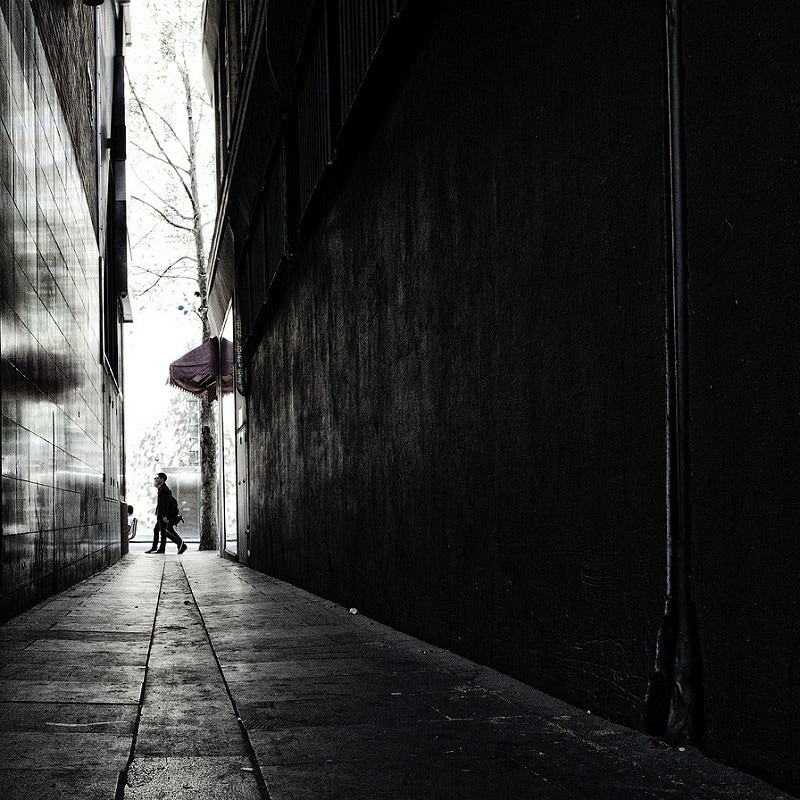by Miguel Camnitzer
| American Street by Ibi Zoboi tells the gripping story of a teenaged Haitian girl, Fabiola, who emigrates to Detroit. In the opening moments of the novel, immigration officials detain her mother at JFK. Confused and terrified, Fabiola must continue on to Detroit by herself. When she gets there, she moves in with her aunt Marjorie (whom she calls Matant Jo) and her three cousins: twins Pri and Donna who are her age, and Chant, who is a couple of years older. |
| Zoboi weaves Fabiola’s memories of her childhood in Haiti (the food, the geography, the catastrophic earthquake years before that still haunts her, the Vodou faith she shares with her mother) into her present journey to survive and thrive on the complicated streets of her new city. With the help of her cousins, she tries on a new persona; she transforms from Fabiola to Fabulous, makes new friends, new enemies, gets a makeover, falls in love. All along she is a young woman in flux, sorting out how much of her old self she is willing to sacrifice in order to become a new person who can fit in, make others happy, and get what she wants. |
| When Fabiola uncovers troubling secrets about her new family, she must come to terms with an uncomfortable truth: survival means sticking together at all costs; it means fighting together too, defending against violence, but also perpetrating it when necessary. It means playing the politics of Detroit’s criminal underground, understanding that there is more than one set of rules. There’s the law, and then there’s “shit you do for fam.” |
| What strikes me most about American Street is the persistent tension that fluctuates under the surface of the daily lives of these characters. Even in times of joy, there is an undercurrent of fear. Threats lurk everywhere, and safe spaces are hard to come by. Under these circumstances, the cousins’ best coping mechanism is to form a united front. Chant is the Brains, Donna is the Beauty, Pri is the Brawn, and Fab eventually joins them as the fourth “B,” the Brave. But despite the power they wield when they stand together, the fragility of their happiness is palpable on every page. I turned those pages anxiously, driven by a mix of hope and despair about their future. That anxiety only intensifies as the story accelerates towards a devastating conclusion. |
On the level of craft and language, Zoboi does wonderful things with speech. She has a knack for describing her characters’ voices using poetic, emotionally charged imagery. When Chantal is helping Fabiola get information about her mother’s whereabouts from the Delta counter at the airport, her “English is like that of the newspeople on TV. Her voice is high and soft, and every sentence sounds like a question…” Fabiola’s mother would tell her how Matant Jo “used to have the sweetest birdsong voice—so sweet that she could make a man fall in love with her just by offering him a glass of water.” Now her aunt has become a formidable and intimidating presence in the house, even though she ails visibly from the effects of a stroke. Fabiola approaches her delicately: “‘Are you feeling okay, Aunt?’ I ask, making my voice as small as the eye of a needle.” It’s an image that captures so beautifully Fabiola’s mix of concern and deference. Other examples abound in the text: at a big party, the cousins’ friends that crowd around Fabiola “sound just like the heavy bass music—hard and fast like too-loud conga drums.” Her toughened cousin Pri softens around the girl she has a crush on: “the edge in her voice is gone as if she is smoothing out everything about herself to impress this girl.” Her boyfriend Kasim’s “voice is like a warm sea breeze filling up the cold, dry air in this place.”
| Photo used under the creative commons for the public domain original rights for photograph belong to: http://ibizoboi.net/about | In her author’s note, Zoboi explains that she was inspired to write American Street in part by her own experience of moving from Haiti to Bushwick, Brooklyn, when she was four years old. In crafting the novel, she drew from her “own memories of living between cultures.” Fabiola embodies all the conflict that “living between cultures” can entail, but also the transformative beauty of that push/pull. American Street is a powerful illustration of how a person can draw from her different cultural influences and heritages to adapt to new circumstances, to shape her own identity and, ultimately, to become the person she wants and needs to be. |




